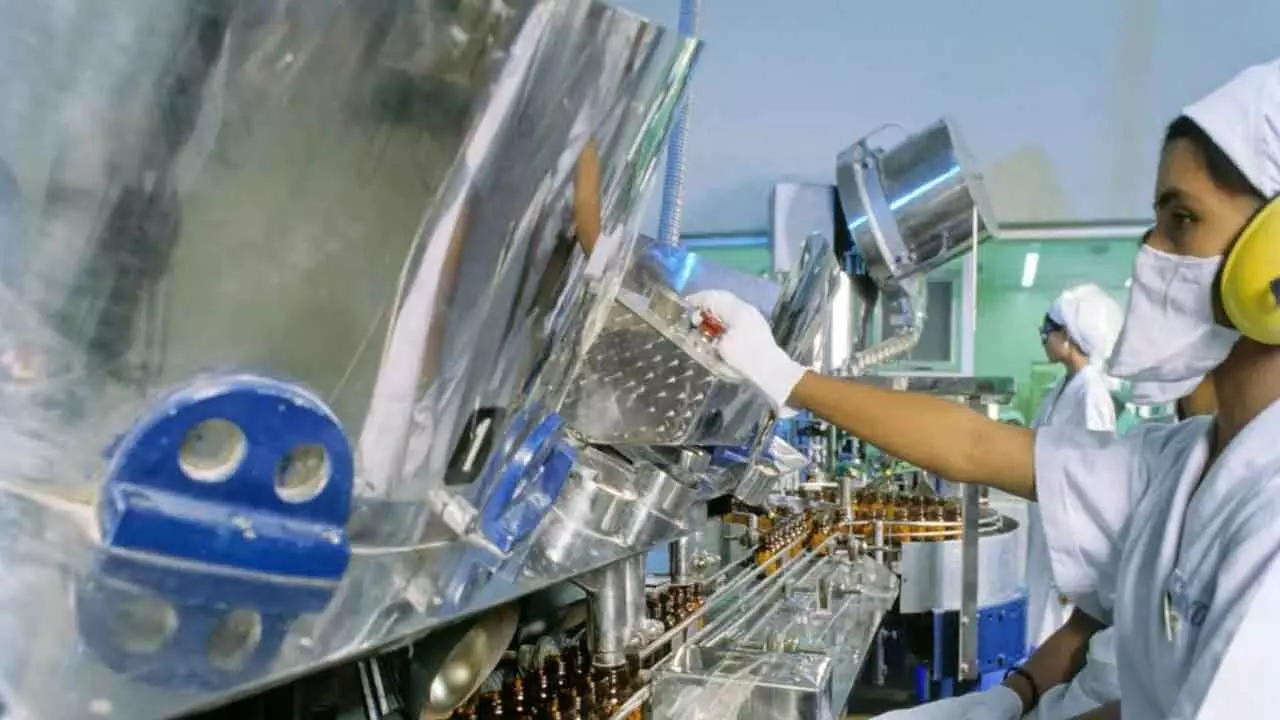How India’s Pharma Sector Becoming World’S Lifeline
With strong government backing, world-class R&D, and rising investor confidence, the country is reshaping access to quality healthcare
How India’s Pharma Sector Becoming World’S Lifeline

As India enters the Amrit Kaal, its pharmacies, labs, and factories stand as beacons of innovation and inclusion—ensuring that life-saving medicines are not a luxury, but a right for every citizen, in every corner of the world
Imagine a world where quality medicines cost less than a cup of chai, and every village has access to life-saving drugs. That’s the reality India is building. From 2014 to 2024 the pharma sector has transformed into a global health leader affordable, innovative, and inclusive. Looking ahead, experts at India Ratings part of the Fitch Group, expect revenue to grow 7.8 per cent year-on-year in April 2025 driven by strong demand and new products.
India’s pharmaceutical industry is a global giant ranking third in volume and 14th in value. It’s the largest supplier of generic medicines providing 20 per cent of the world’s supply and a key player in affordable vaccines. In 2023-24, the sector’s turnover hit Rs 4,17,345 crore growing steadily at over 10 per cent annually for the past five years. For the common man this means more medicines at lower prices, better healthcare and jobs in factories and labs across the country. From small towns to big cities, India’s pharma growth is creating opportunities and saving lives.
Research & Development (R&D) and innovation in Pharma Sector is done by number of institutions and organizations under various scientific Ministries/Departments. The Department of Pharmaceuticals has set up seven National Institutes of Pharmaceutical Education & Research (NIPERs) as institutes of national importance, which besides imparting postgraduate and doctorate education, conduct high end research in various pharma specializations. Further, Department has framed a “National Policy on Research & Development and Innovation in Pharma-MedTech Sector in India” to encourage R&D in pharmaceuticals and medical devices and to create an ecosystem for innovation in the sector in order for India to become leader in drug discovery and innovative medical devices through incubating an entrepreneurial environment to build a robust ecosystem to ensure the holistic development of R&D and Innovation. The policy was notified on August 18, 2023.
The policy postulates three main areas of focus to achieve the objectives: To create a regulatory environment that facilitates innovation and research in product development, expanding the traditional regulatory objectives of safety and quality; To incentivize private and public investment in innovation through a mix of fiscal and non-fiscal measures; and, To build an enabling ecosystem designed to support innovation and cross-sectoral research as strong institutional foundation for sustainable growth in the sector.
The government’s smart schemes are the backbone of this success. The Pradhan Mantri Bhartiya Janaushadhi Pariyojana (PMBJP) runs 15,479 Jan Aushadhi Kendras, offering generic medicines at prices up to 80 per cent lower than branded ones. A heart medicine that once cost Rs 500 might now cost Rs 100! The Production Linked Incentive (PLI) Scheme for Pharmaceuticals with Rs 15,000 crore, supports 55 projects to make high-end drugs like cancer and diabetes medicines right here in India. Another PLI scheme with Rs 6,940 crore focuses on raw materials like Penicillin G, reducing our need for imports. The PLI for Medical Devices backed by Rs 3,420 crore is boosting production of tools like MRI machines and heart implants.
Then there’s the Promotion of Bulk Drug Parks scheme with Rs 3,000 crore building mega hubs in Gujarat, Himachal Pradesh and Andhra Pradesh to make medicines cheaper and faster. The Strengthening of Pharmaceuticals Industry (SPI) Scheme with Rs 500 crore, funds research and upgrades labs, helping Indian companies compete globally. These efforts mean medicines are made in India, for India and for the world keeping costs low and quality high.
India’s pharma sector supplies 55-60 per cent of UNICEF’s vaccines, meeting 99 per cent of WHO’s DPT (Diphtheria, Whooping cough and Tetanus) vaccine demand, 52 per cent for BCG (Bacillus Calmette-Guérin is a vaccine primarily used against TB), and 45 per cent for measles. From Africa to America, Indian vaccines save millions. At home, these schemes create jobs for young Indians, from factory workers to scientists. Foreign investors are pouring in with Rs 12,822 crore in 2023-24 alone, because they see India’s potential. The government welcomes 100 per cent foreign investment in medical devices and greenfield pharma projects, making India a hotspot for global companies.
India’s pharmaceutical sector is more than an industry: it’s a lifeline. With schemes like PMBJP, PLI, and Bulk Drug Parks, the Modi government is ensuring no one is left behind when it comes to healthcare. From affordable medicines at Jan Aushadhi Kendras to vaccines reaching the world, India is building a healthier, self-reliant future. As we step into Amrit Kaal, every Indian can take pride in a nation that heals, innovates, and leads. The future of healthcare is here, and it’s proudly Indian!

